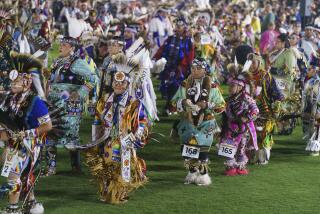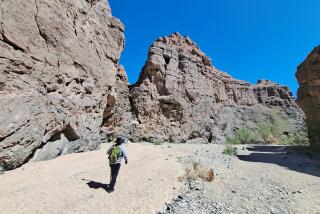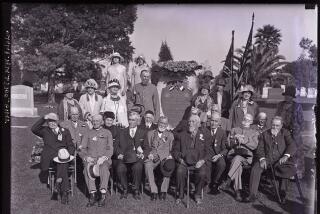A Treaty Remembered
- Share via
Monday marks the sesquicentennial of one of the San Fernando Valley’s historic events--the signing of the Treaty of Cahuenga, which ended the Mexican-American War in California and paved the way for entry into the Union.
Lt. Col. John C. Fremont, commander of the California Volunteer Battalions, and Gen. Andres Pico, commander of the Mexican forces, met near what is now Universal City on Jan. 13, 1847 to sign their names to the document, one copy in English and the other in Spanish. About a year later, the Treaty of Guadalupe Hidalgo was signed, formalizing the Treaty of Cahuenga. Under the treaty the United States acquired from Mexico an area made up of what is now California, , Nevada, Utah, most of Arizona and New Mexico, and parts of Colorado and Wyoming; Mexico also ceded all claims to Texas. In exchange, the U.S. paid $15 million and assumed $3.25 million in claims against Mexico.
By ending hostilities with the Mexican forces in California, the treaty set the area on course for eventual statehood. Three and a half years later, on Sept. 9, 1850, California joined the union.
THE TREATY
Also known as the Capitulation of Cahuenga, the Treaty of Cahuenga contained seven articles, plus an eighth added three days later. Below is the introduction signed by Fremont:
*
To all to whom these presents shall come, greeting:
Know ye that, in consequence of propositions of peace, or cessation of hostilities, being submitted to me, as commandant of the California Battalion of United States forces, which have so far been acceded to by me as to cause me to appoint a board of commissioners to confer with a similar board appointed by the Californians, and it requiring a little time to close the negotiation; it is agreed upon and ordered by me that entire cessation of hostilities shall take place until tomorrow afternoon, and that the said Californians be permitted to bring in their wounded to the mission of San Fernando, where, also if they choose, they can remove their camp, to facilitate said negotiations.
Given under my hand and seal this twelfth day of January, 1847.
--J.C. Fremont, Lieutenant-Colonel United States Army and Military Commandant of California
THE SITE
The spot where the treaty was signed is considered by many historians as the birthplace of California and one of the most historic sites west of the Mississippi. The ceremonies took place on the porch of the Feliz adobe located in the middle of what is now Lankershim Boulevard. Fremont returned to the site in 1888 and pointed out where the historic event had occurred, but by the turn of the century, the old adobe had disintegrated. The site was later home to a small animal hospital, and in 1924 it was dedicated as Fremont-Pico Memorial Park.
Public sentiment prompted city officials to build replica of the adobe on Lankershim Boulevard. On Nov. 2, 1950, a dedication ceremony was held for the adobe and courtyard built by the city of Los Angeles at Campo de Cahuenga. Nearby Metro Rail tunneling has left the site, a city historic cultural monument and a state historical landmark, closed to the public.
THE CELEBRATION
History buffs will don authentic garb, portraying Fremont, Pico and others, to commemorate the 150th anniversary of the treaty’s signing. Participants will also portray soldiers, pioneer women and Mexican fiesta dancers. The festivities will begin at 1:30 p.m. today at Campo de Cahuenga, 3919 Lankershim Blvd. Directions for parking will be posted
Sources: Campo de Cahuenga Historical Memorial Assn. of California; Guy Weddington McCreary; “The San Fernando Valley Past and Present” by Lawrence C. Jorgenson; Encyclopedia Americana, World Book. Researched by STEPHANIE STASSEL/Los Angeles Times
More to Read
Sign up for Essential California
The most important California stories and recommendations in your inbox every morning.
You may occasionally receive promotional content from the Los Angeles Times.










